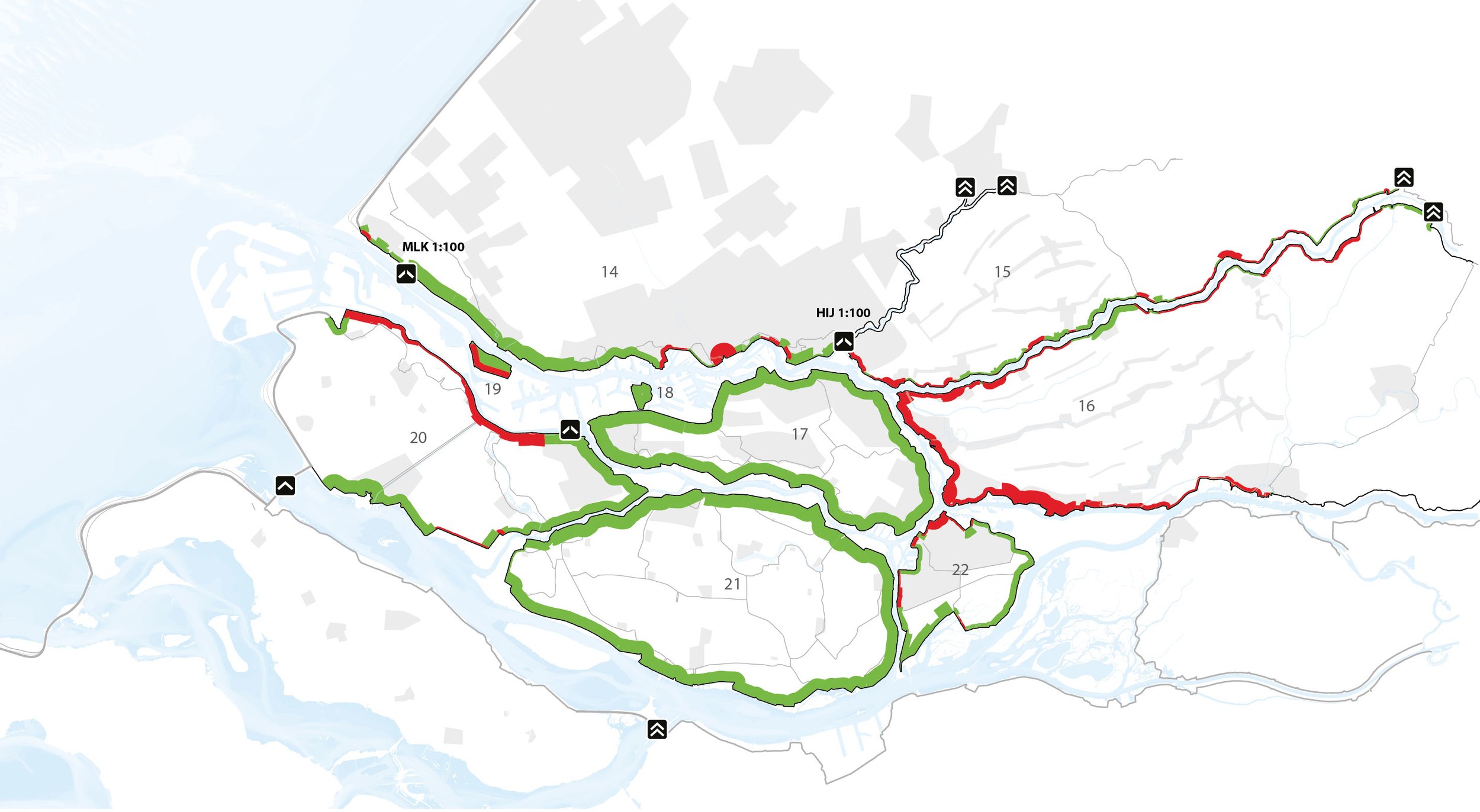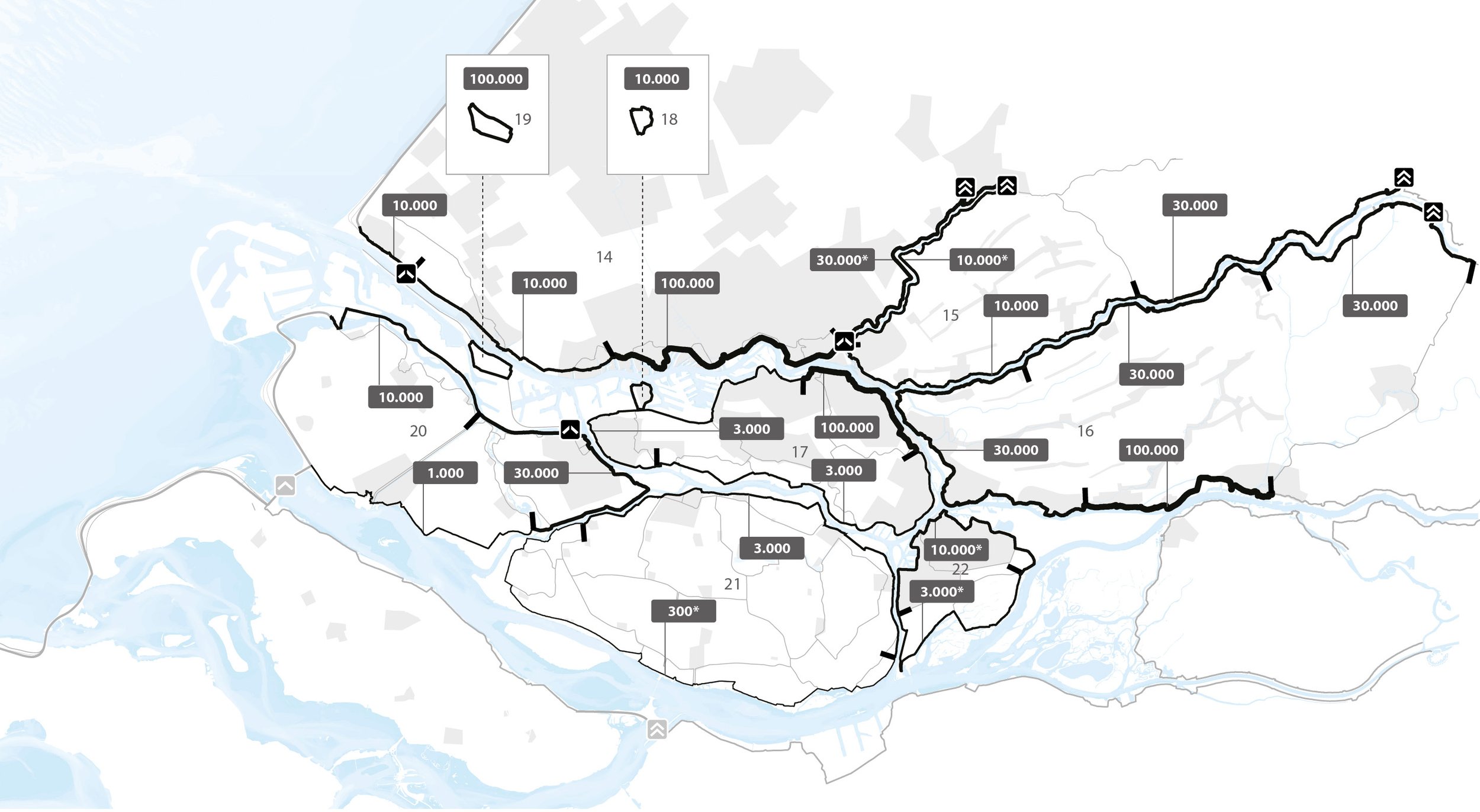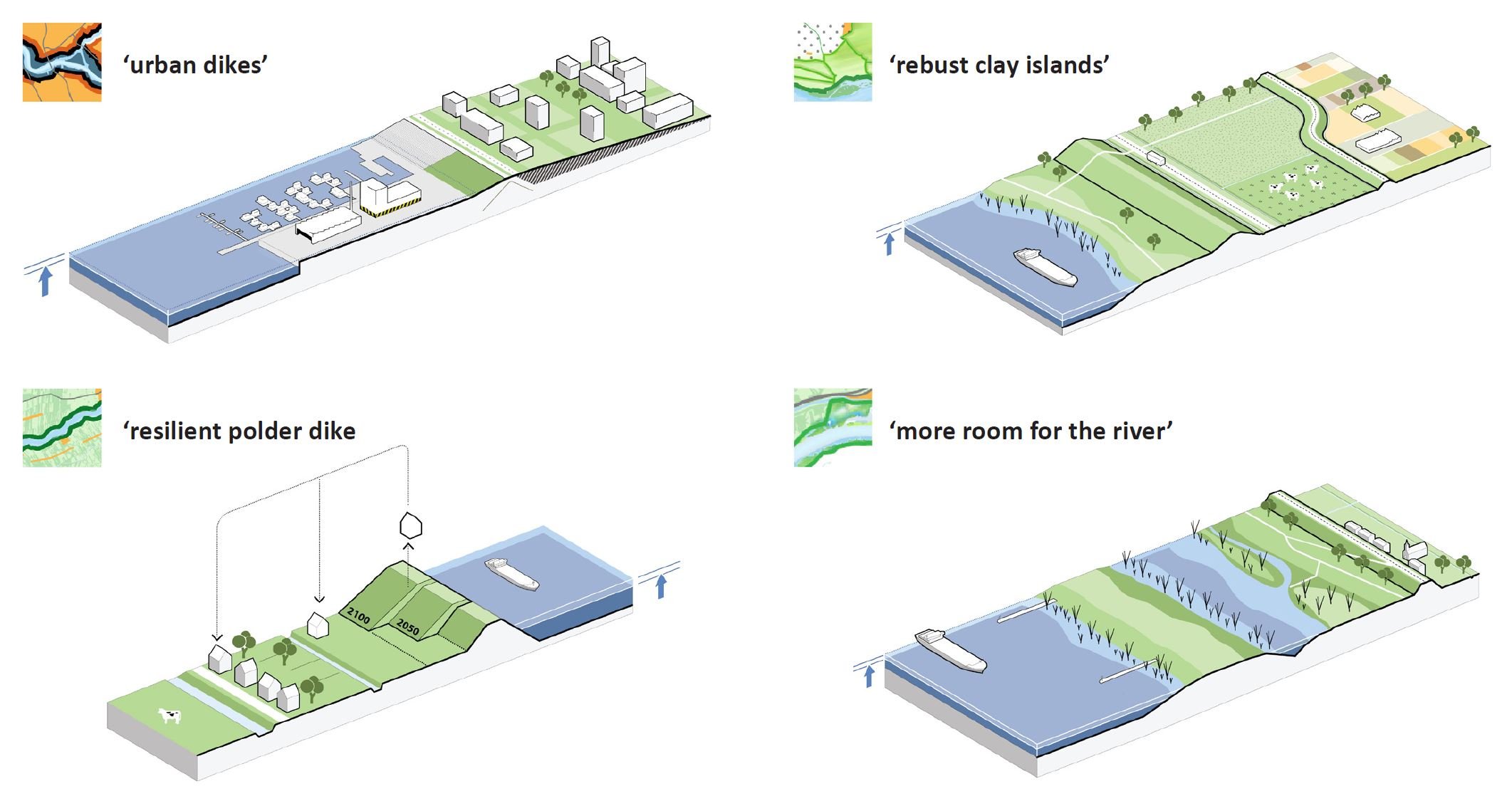
Deltaprogram
Rijnmond-Drechtsteden, The Netherlands
Location | Rijnmond-Drechtsteden, The Netherlands
Year | 2012 - 2014
Client | Ministry of Infrastructure and Environment (I&M), Deltaprogram
Collaboration | Deltaprogram Team Rijnmond-Drechtsteden, Deltares, Defacto
Status | Officially approved regional and national water safety strategy
Deltaprogram Rijnmond-Drechtsteden is part of the National Deltaprogram to keep The Netherlands flood resilient towards the next century. The main goal of this program is to guarantee the water safety and the fresh water supply of the Netherlands. The region Rijnmond-Drechtsteden is an area of high economic significance which is densely populated and has a large industrial harbor complex. In this urbanized Delta water enters from two sides: the open sea and the rivers that originate in the European hinterland. Due to climate change and subsidence the risk of floods increase, as well as the salinization of soil and water.
For two years DE URBANISTEN became part of the Deltaprogram projectteam Rijnmond-Drechtsteden to envision new perspectives and reflect on their spatial potential and consequences. We closely collaborated with Deltares in a ‘design and calculate effect’ relationship. This gave us insight in the possible effects of a flood in terms of economical damage and number of casualties per dike segment. These effects depend on the position of the dike in the urban Delta. Therefor a major change in the protection system is proposed: differentiate the protection levels of dike segments within one traditional ‘dike ring’.
The new protection levels result in a very differentiated dike task: some dike segments need firm reinforcement in the 50 years to come, others can remain like they are. The impact and context of each dike segment differs substantially in this region. In dense areas the entire dike is integrated in its urban fabric. Therefore dike reinforcement has to be related to the urban development of the city. We defined a set of operational spatial perspectives for the region:
1. The ‘urban dike’ and its options to integrate water safety measures with the urban fabric, development potential and the quality of public space. These dikes need a balanced approach as they represent many urban values. The good news is that these structures are mostly over dimensioned and need modest levels of intervention to meet future safety norms.
2. The ‘robust clay islands’ protected by high and strong sea dikes secured by their underlayment of many layers of river clay. Combined with a system of existing compartment dikes within the islands, these create a high level of flood safety which can be reinterpreted as a mayor strategic reserve for the region. Here value can be added in the future without having to invest in flood safety measures.
3. The ‘resilient polder dike’ where a customized set of measures have to be applied to adjust these vulnerable structures to higher protection levels. Sometimes this means high cost dike reinforcements with respect to the historical settings. But mainly the aim is to apply a long term strategy to direct spatial development into a more flexible dike profile that can be more easily adjusted to future safety needs.
4. ‘More room for the river’ on the south side of the region in direct connection to the future upstream water safety measures as part of Deltaprogram Rivers.
These four spatial perspectives connect to the main characteristics of the Rijnmond-Drechtsteden Delta area. They try to transcend the fixation on dikes only and involve the entire environment into the safety strategy.
In addition to this approved policy we propose to take this even one step further by involving the entire polder system into the protection system. By water logging deep peat polders, a further sinking is slowed down. This can be combined with governmental ambitions to create more wet nature. At the same time a wet polder can add to the stability of the primary dike and can even function as a safety valve to lower pressure on the most vulnerable peat dikes. Here a strategy of deliberately flooding polders would be applied. This strategy could even result in a significant reduction of dike improvements in the most delicate areas like the Hollandsche IJssel dike. This strategy deserves further examination.









